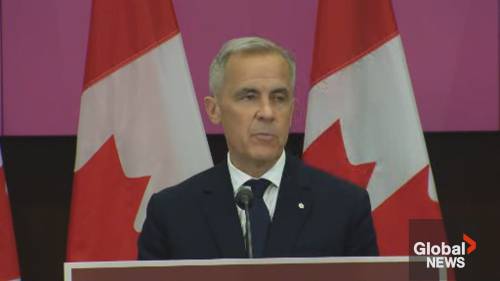In a watershed moment for Canadian military policy, Finance Minister Mark Carney announced Wednesday that Canada will reach NATO’s long-established defence spending target of 2% of GDP this fiscal year—years ahead of previous projections and amid mounting global security challenges.
“This commitment represents a fundamental shift in Canada’s approach to collective security,” Carney stated during a press conference in Ottawa. “The rapidly deteriorating international security environment demands that all NATO allies step up and fulfill their obligations.”
The accelerated timeline marks a significant departure from the Liberal government’s previous stance. Just months ago, Defence Minister Bill Blair had indicated Canada would reach the 2% threshold by 2032, placing Canada among the laggards in the 32-member alliance. Currently, only 11 NATO members meet or exceed the spending target.
Security experts point to Russia’s ongoing aggression in Ukraine and increasingly assertive Chinese military posturing as primary catalysts for Canada’s policy adjustment. Dr. Jennifer Leighton, national security analyst at the Canadian Institute for Global Affairs, told CO24 that “this represents the most substantial Canadian military spending increase since the post-9/11 period.”
The announcement comes just weeks before the crucial NATO summit in Washington, where alliance cohesion and burden-sharing were expected to dominate discussions. U.S. officials have privately expressed satisfaction with Canada’s decision, viewing it as strengthening the North American security partnership at a critical juncture.
Opposition parties offered mixed reactions. Conservative defence critic James Bezan welcomed the increase but criticized the government for “years of neglect” that left Canadian forces with aging equipment and recruitment challenges. Meanwhile, NDP leader Jagmeet Singh cautioned that increased military spending shouldn’t come at the expense of social programs.
Details regarding specific allocation of the additional funds remain forthcoming, though Defence Minister Blair has previously identified Arctic sovereignty, cyber capabilities, and naval fleet renewal as priorities. The Canadian Armed Forces currently face approximately $38 billion in deferred equipment maintenance and replacement needs, according to Department of National Defence estimates.
International relations experts suggest the timing is particularly significant given growing uncertainty about American commitment to NATO, regardless of November’s election outcome. “This positions Canada as a more credible security partner precisely when alliance solidarity is being tested,” said Dr. Michael Charron, professor of international relations at the University of Toronto.
The fiscal implications of this accelerated timeline will likely feature prominently in the upcoming fall economic update. Analysts from major Canadian banks project the additional spending could add between $15-20 billion annually to federal expenditures, potentially complicating deficit reduction targets.
As global security architecture undergoes its most significant restructuring since the Cold War’s end, a fundamental question emerges: Will Canada’s renewed financial commitment to defence translate into meaningful improvements in military capability and international influence, or merely satisfy an accounting benchmark without addressing deeper structural challenges facing our armed forces?











